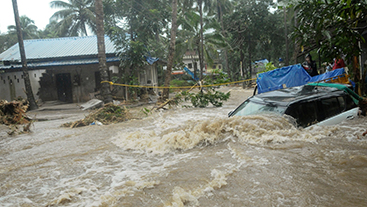Climate and disaster risk insurance in low income countries: Reflections on the importance of indicators and frameworks for monitoring performance and impact

Download
The use of climate and disaster risk insurance (CDRI) in low income countries has received significant interest over the last decade, as its ability to enable faster and more reliable access to funds is seen as an important mechanism to help strengthen the resilience of poor and vulnerable communities. This has led to national and international commitments and efforts to increase CDRI coverage to the poor and vulnerable.
What remains unclear is how to effectively monitor and evaluate these instruments, with a lack of consensus on what indicators to use and what information to collect. A particular challenge is how to measure performance and impact.
This paper categorises the use of CDRI across four major policy domains (disaster aid, social protection, climate adaptation and loss and damage to climate change) and explores the meaning of success from different stakeholder perspectives, including farmers in India and the insurance industry in Africa. The authors review how CDRI is currently evaluated, what assessment frameworks exist, which indicators are used and what evidence is emerging from local level data. They find a diversity of success criteria at the project and actor level.
The findings of this paper indicate a need for transparent monitoring and evaluation frameworks applied across insurance domains to enable greater scrutiny and to assist those funding, demanding or supplying insurance instruments.
Key points for decision-makers
- A growing number of national and international institutions are looking beyond post-disaster financing instruments towards pre-arranged risk financing, including insurance mechanisms. However, the empirical evidence on insurance interventions’ impact on poor and vulnerable populations is still inadequate.
- The authors reviewed seven global/regional and three national-level CDRI schemes. They also carried out 17 focus group discussions with farmers and 11 key informant interviews in India, and used survey date from 30 insurance experts in Africa.
- The authors find that a multitude of indicators, frameworks and methodologies are being used to define the success of CDRI.
- They assert that: transparency about the performance of schemes is important to build trust, avoid misunderstandings and help improve design; monitoring and evaluation of the implementation of CDRI is important to understand how insurance supports wider development objectives; and information about how insurance supports current and future resilience to climate change is needed to avoid unintended consequences and short-lived solutions.
- The authors conclude that new methods to systematically collate progress on resilience in different policy domains and sectors will be crucial to advance monitoring and evaluation. An important aspect is thus the quality of the CDRI instruments rather than the quantity.
- They also point out that despite CDRI’s role in reducing vulnerability to climate change impacts, it is only sustainable in the mid- and long run if it is underpinned by strong disaster risk reduction and adaptation action.
Read a commentary on this paper by the authors here.

